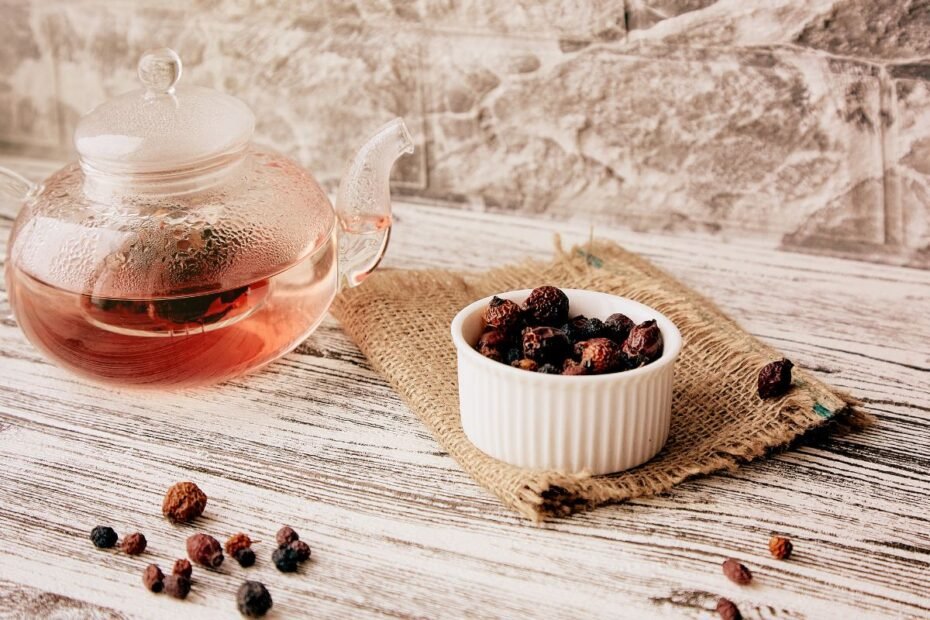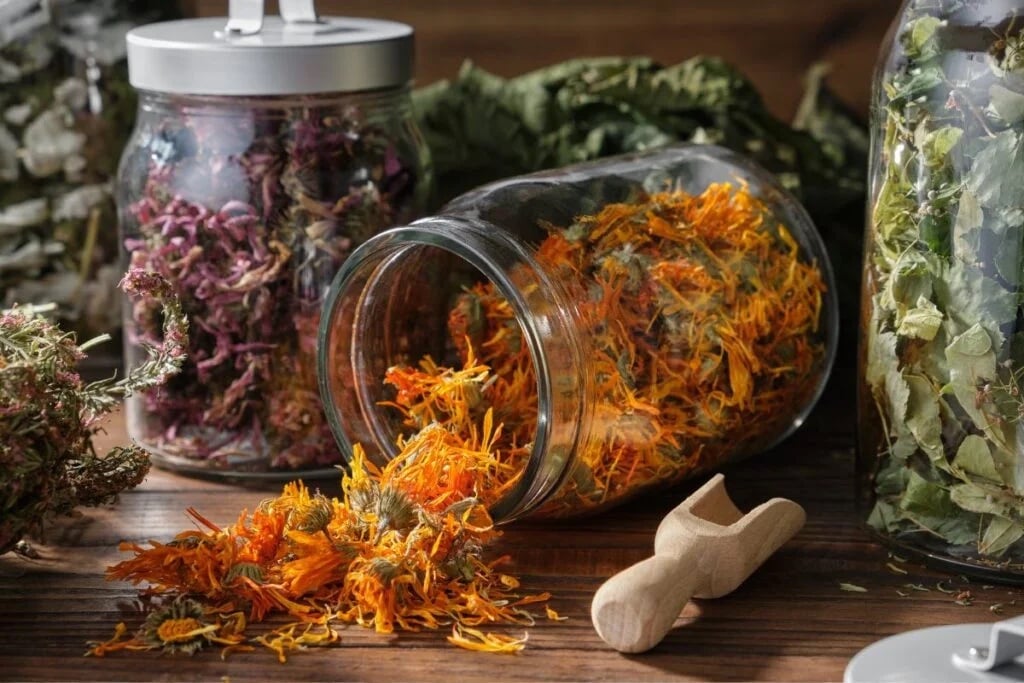Chasteberry has been known in folk medicine for at least 2000 years. However, as it is a Mediterranean plant, it is still little known in some countries. Although, we can already grow chasteberry in our own flowerbeds. People commonly use the berries of chasteberry for medicinal purposes. We will discuss how chasteberry tea benefits women’s health and how to prepare it.
Chasteberry: Appearance, Species, and Distribution
Chasteberry, or Vitex (Vitex), belongs to the genus Verbena. It is widespread in tropical and subtropical areas, with some species growing in the temperate regions of Europe and Asia.
There are more than a dozen known species of chaste trees.
- The black plum (Vitex doniana) and Chinese chaste tree (Vitex negundo) are cultivated as ornamental plants in warm-climate regions.
- Chasteberry (Vitex agnus-castus), smooth chaste tree (Vitex glabrata), Chinese chaste tree, and Joho Lawe tree (Vitex quinata) are useful medicinal plants.
- Vitex cofassus, Vitex pinnata, and roundleaf chastetree (Vitex rotundifolia) are valued for their wood. The wood of the chaste tree is strong, has a beautiful texture, and is used in the furniture industry, decoration, and construction.
If you like to make medicinal chasteberry tea, you should use Vitex berries.
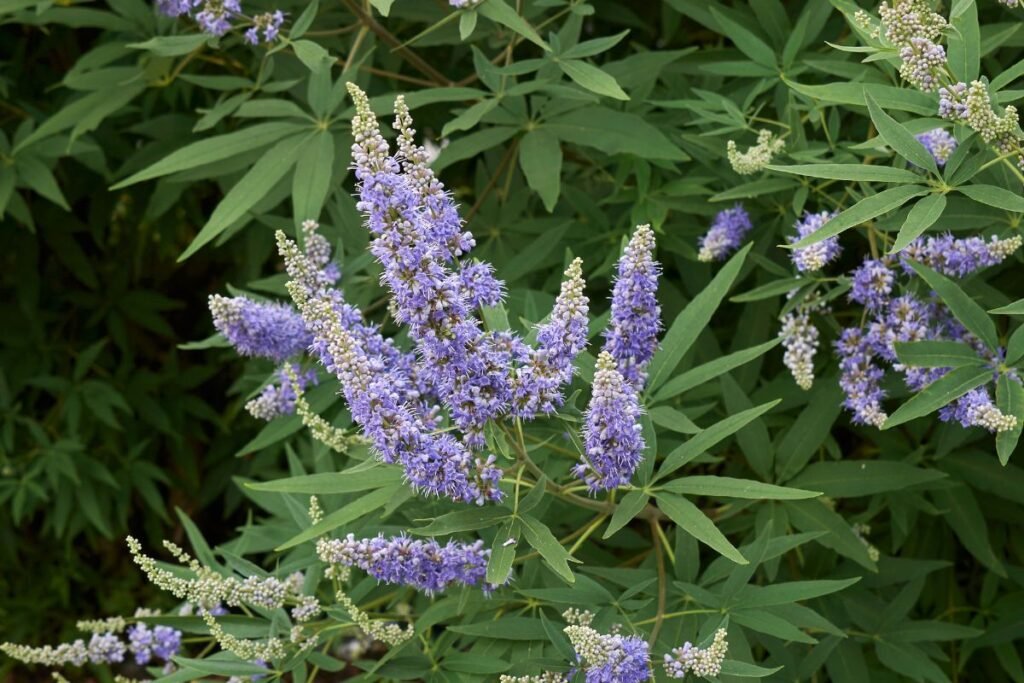
A Little Bit About Chasteberry
Chasteberry (other names are vitex, chaste tree, Abraham’s balm, lilac chaste tree, or monk’s pepper) grows on the Mediterranean coast. It is an eye-catcher due to its height, distinctive leaves, and clusters of purple flowers.
Vitex grows up to 3–5 meters tall. It has elongated dark green and palmate form leaves. The small, light purple flowers are clustered in tall, apical bunches. The fruit of a chaste tree is a stone fruit. It is a red and yellow berry that ripens around September. The flavor is reminiscent of pepper and sage.
Chasteberry in Folk Medicine: A Brief History
The chaste tree was described as early as the 23rd year AD. Roman naturalist and historian Pliny the Elder described this plant as a medicinal herb. At that time, married women used chasteberry for a festival in honor of the goddess Demeter. They would place it in their beds to facilitate their celibacy, which was compulsory until the feast.
Medieval clergy also used vitex as a libido-reducing and celibate herb. This is why chasteberry is sometimes called monk’s pepper or Abraham’s balm.
However, there was also another view: chasteberry was considered to be an aphrodisiac that stimulated sexual passion in both men and women. Today, science confirmed neither theory.
Can I Grow Chaste Trees in Temperate Climate Regions?
In Europe, chasteberry grows as an ornamental plant because of its particularly ornate flowers. The flowers, by the way, resemble buddleia in shape and scent, and the shrub is similar too.
In temperate climate regions, the chaste tree grows up to 2 m tall and 1 m wide. It flowers in July–September. The plant can withstand frosts up to -26 °C and overwinter in zones 5–6.
It grows well in fertile to moderately fertile light sandy loam, loamy loam, and water-permeable soil.
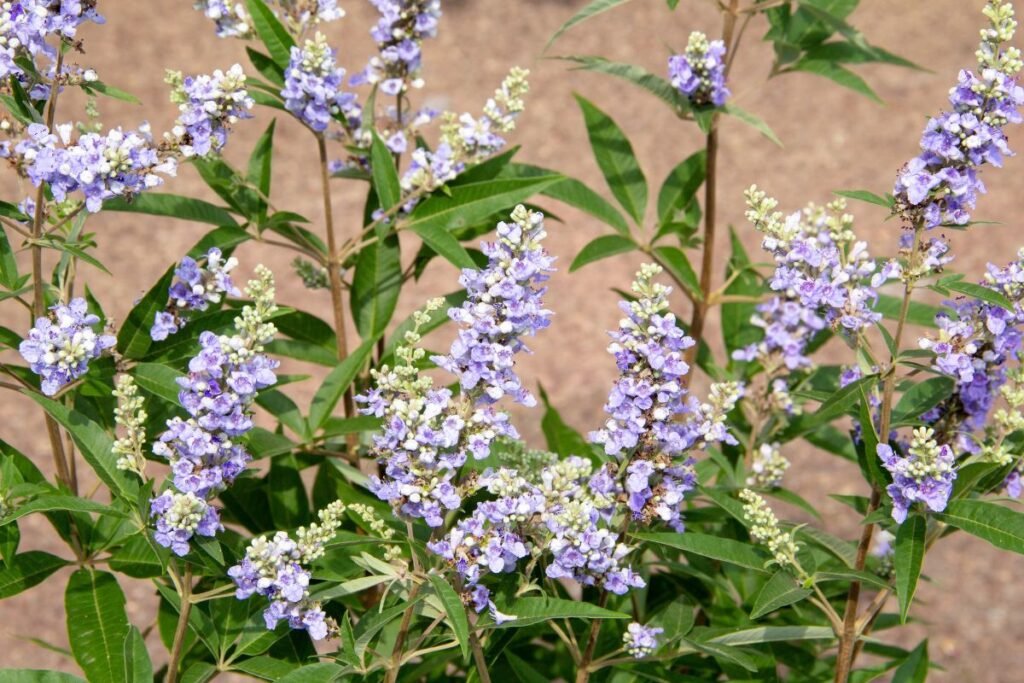
Benefits of Chasteberry for Women’s Health
Chasteberry tea benefits are recognized and appreciated in folk and traditional medicine. Scientific studies confirmed and proved its benefits for women’s health. Therefore, chasteberry tea and various preparations have the following features:
- to relieve the symptoms of PMS. It is particularly effective in reducing swelling and pain in the breasts, as well as in overcoming irritability, depressed mood, migraines, and constipation.
- it can help people facing infertility. Some studies have found that taking Vitex helps to increase the likelihood of successful conception, as well as ovulation. Folk medicine uses chaste tree preparations to promote fertility in men and women.
- to relieve menstrual pain and regulate the menstrual cycle.
- to relieve unpleasant sensations during menopause. It reduces hot flashes and stabilizes hormones, which improves mood, makes it less volatile and more stable, and reduces chills and sleep problems.
- chasteberry helps to treat polycystic ovary syndrome; it helps to restore hormonal balance and regulate the menstrual cycle. Unfortunately, chaste trees cannot cure polycystic ovaries.
- it helps to control the release of prolactin. Therefore it has a positive effect to treat hyperprolactinemia (a condition in which the concentration of prolactin in the blood increases due to disturbed prolactin secretion or removal mechanisms).
- the chaste tree helps relieve headaches or migraines, especially during PMS.
- Vitex is also an excellent insect repellent. You can make a spray from it and feel free of flies, mosquitoes, and ticks for at least six hours. Rinsing your head with a Vitex decoction helps to prevent lice.
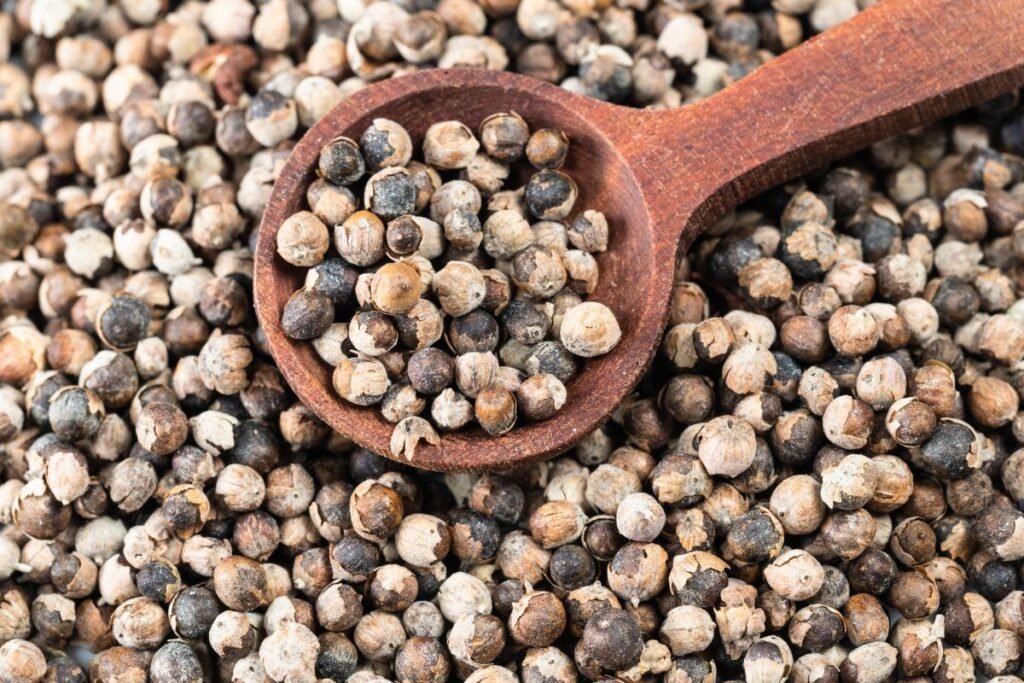
Who Is Not Recommended to Use Chasteberry Tea?
Although it is considered safe for most people, it is not advisable to use Vitex if:
- you are allergic to verbena
- you are pregnant or breastfeeding
- taking antipsychotic medication
- using contraceptive pills
- you are on hormone replacement therapy
If you doubt whether it is safe to use chaste berries, be sure to check with your doctor or pharmacist.
Chasteberry Tea: How to Prepare?
Chaste tea is made from its ripe berries and/or leaves. The dried and crushed raw material is the most common.
Ingredients:
- ½ tbsp. of vitex berries (crushed)
- 1 glass of water
Preparation: cover the berries with boiling water and leave to steep for 5–10 minutes. Drain.
Use: drink 2-3 cups a day.
If you need to regulate the menstrual cycle, drink 2 cups daily for 6 weeks, then take a week’s break. Repeat the treatment if necessary.
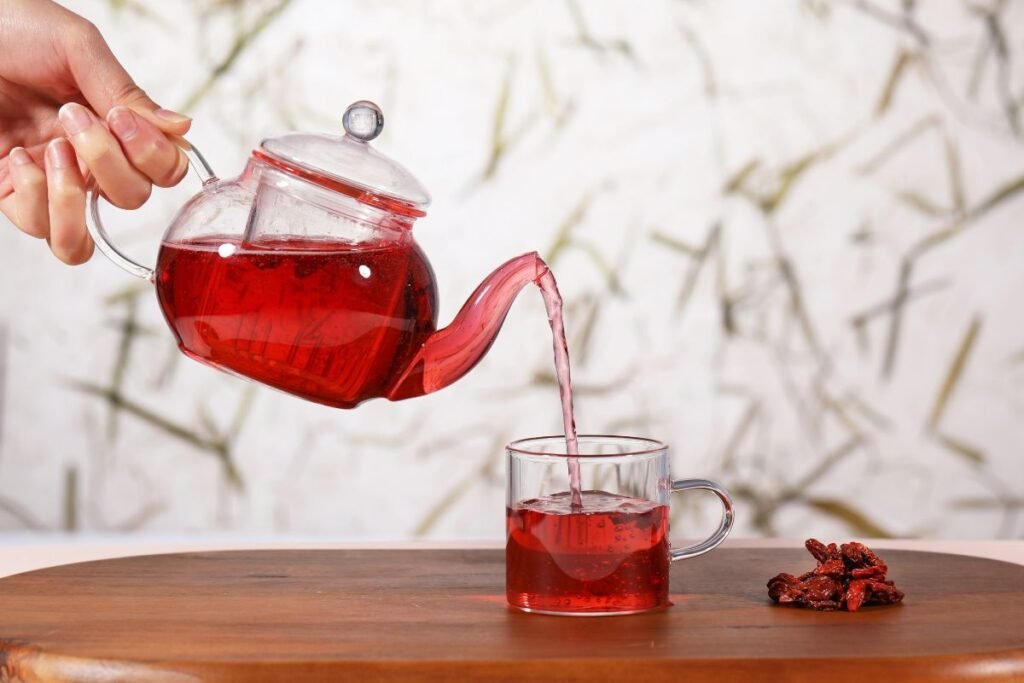
Vitex Tea for PMS and Menopause Symptoms
This is a delicious and very beneficial tea for women. All the ingredients are crucial and valuable for maintaining well-being. It helps normalize hormonal balance and has calming, relaxing, and stress-relieving properties.
Ingredients:
- ½ tsp. of each rose petal, mashed vitex berries, hibiscus petals, and crushed anise
- 1 cinnamon stick
- 2 cups of water
Preparation: put all the ingredients in a saucepan, cover with water, and bring to a boil. Turn off the heat, cover, and leave for 5–10 minutes. Drain.
Use: drink 2-3 cups a day. It is delicious, hot or cold. If desired, sweeten the tea with a teaspoon of honey, maple syrup, or stevia.
Use it only to relieve PMS symptoms, but you can drink it again one month later.
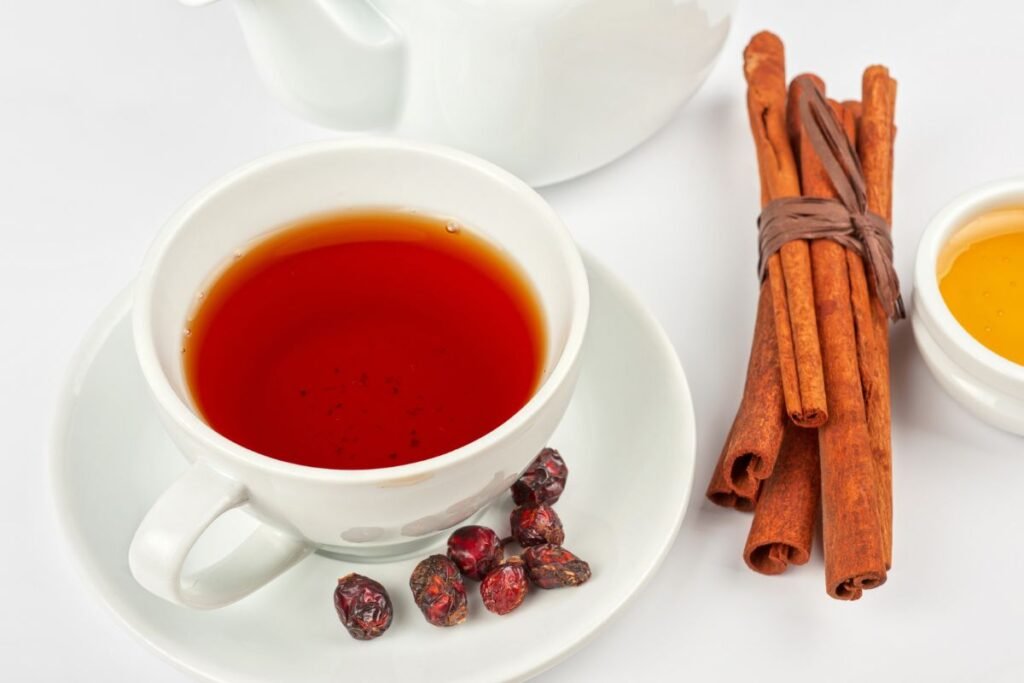
Chasteberry Tea for The Balancing of Hormones
This tea helps to normalize the levels of estrogen and progesterone, thus alleviating the symptoms of PMS and menopause. It also helps to relieve menstrual pain. It soothes, reduces anxiety and fatigue, and helps to overcome moodiness.
Ingredients:
- ½ tsp. of smashed Vitex berries
- 1 tbsp. of freshly squeezed lemon juice
- ½ tsp. of ginger powder
- 1 tsp. of honey
- 1 cup of water
Preparation: Cover the berries and ginger with boiling water and leave to infuse for 10 minutes. Drain. Add the lemon juice and a teaspoon of honey. Stir well.
Use 2-3 cups a day as a hot or cold drink.

Sources:
- https://hormonesbalance.com/recipes/chasteberry-tea-pms-menopause/
- https://health.clevelandclinic.org/chasteberry-benefits-and-risks
- https://www.verywellhealth.com/vitex-what-should-you-know-about-it-89530
- https://www.healthline.com/nutrition/vitex
- https://pubmed.ncbi.nlm.nih.gov/11159568/
- https://www.ncbi.nlm.nih.gov/pmc/articles/PMC2529385/
Associative photos from © Canva.
